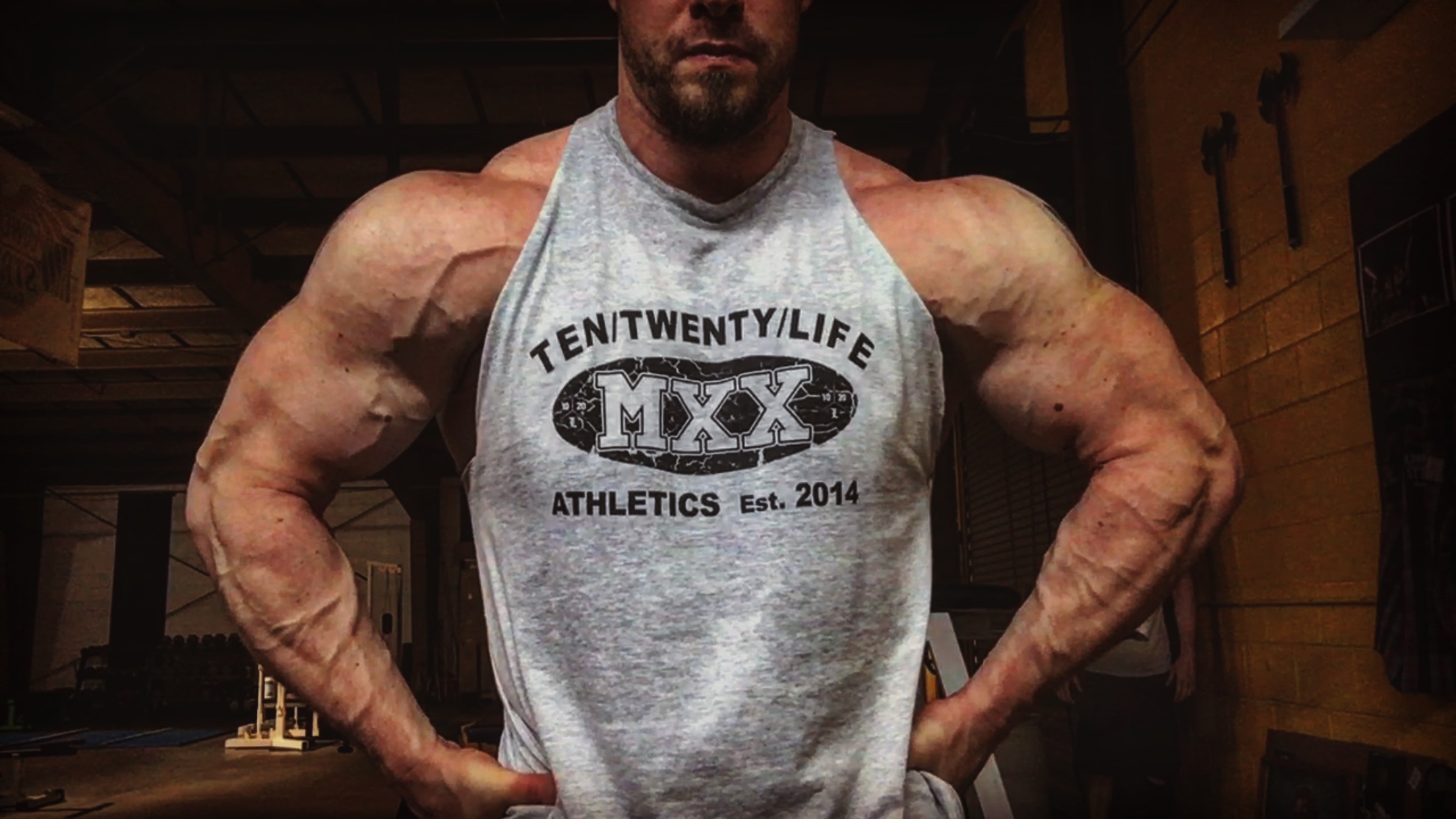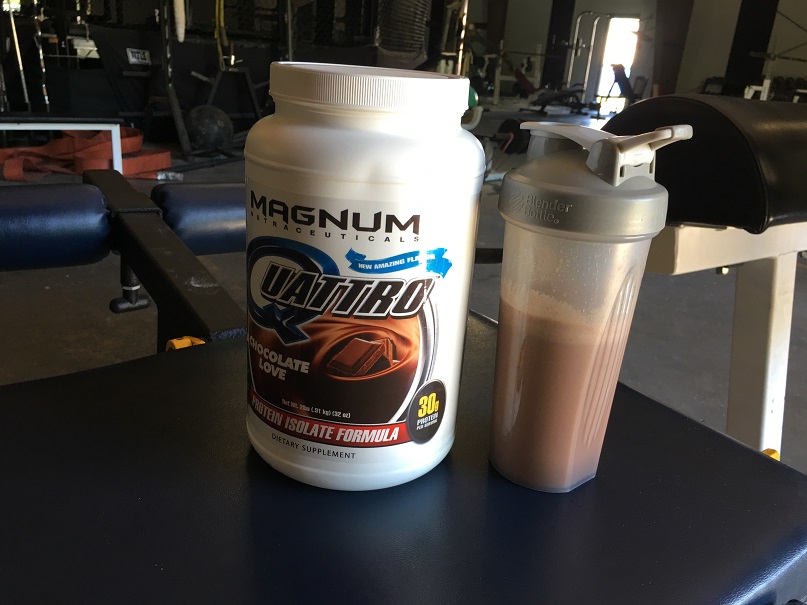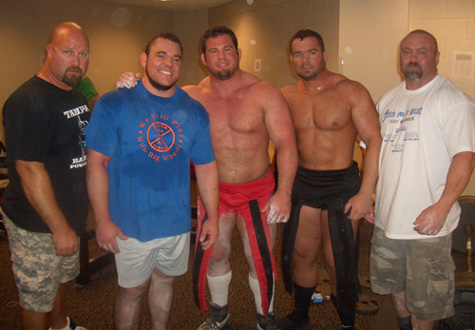
17 May Five Diet Tips for the Confused Unhealthy Powerlifter
By Brian Carroll
As the growth of powerlifting, and strength sports for that matter, reaches popularity levels never seen before there comes change. Some in the powerlifting community, much to my surprise, and for whatever reason, really want powerlifting to remain a dingy, in the shadows – a second-rate ‘hobby.’ They think and say powerlifting is for outcasts, rejects and those who don’t fit in a particular box. I don’t necessarily disagree with this, but at the same time, I don’t feel it’s right to classify everyone who strives to be one of the powerlifting greats as an outcast. Many top powerlifters successfully navigate through life without having to resort to being a drug-dealing-life-derelict-bouncer at the local pub. There are also powerlifters who have created large enterprises that are highly profitable and helpful by sharing in the trenches information, wisdom and knowledge that wouldn’t be available if for not the years spent experimenting under the bar. If you look around, many successful powerlifters have highly profitable businesses. Dave Tate and Louie Simmons come to mind, as well as Jim Wendler, Mark Bell, and Chris Duffin. (Equipped lifters leading the business pack. Odd, or nah?)
Back on topic… I feel that with the mainstream reach and appeal that powerlifting is suddenly experiencing is pretty impressive and I’m grateful. A few examples come to mind: Westside Documentary (which I just watched, and it’s fantastic), lifters like Larry Wheels and Blaine Sumner on Fox Sports TV with lifting videos going viral, features in Muscle & Fitness, etc. This broader reach has highlighted and brought forth the Thor-like physiques that are atop the podiums at the some of the most significant strength competitions.
Let’s face it: most people don’t strive to look like a sumo wrestler, no matter how strong one might be. It’s generally not healthy, attractive, marketable, or appealing to the mainstream. Speaking of mainstream appeal, I would be willing to bet that if surveyed, a lopsidedly-significant amount of voters would overwhelmingly instead prefer to look like a skinny legged Men’s Bikini competitor than a Brian Carroll, Chuck Vogelpohl, Dave Hoff, or Gary Frank type build. And as much as that sucks, we know it’s true.

If you’re a ‘softer’ powerlifter, being ~35% BF will not help you lift more weight than if you were trimmed down 20-25% BF, which is much more reasonable and likely healthier for getting rid of the dangerous, visceral fat around vital organs. In my experience, around 15-18% BF is ideal for most male powerlifters (at least under 20%). It’s typically not too lean, nor dry enough to risk more injury, but it will likely have you pretty competitive in your weight class without giving up too much muscle.
Why go up another weight class if you’re only fatter? Granted, you might lose some strength initially due to glycogen depletion/water loss, leverages changing, etc. but this will come back (and some) when you replace the fat with actual muscle that will make you stronger and which helps you physically lift the weight.
Let me preface the rest of this article by saying a diet overhaul is not an easy change. Taking an ‘athlete’ who eats on their schedule can be a tough road to hoe. Especially when they consume shallow ‘quality’ food (i.e., tasty, fast, or convenient food). They drink only a couple cups of water a day, but fill their gut with five Cokes at a time like it’s nothing. It will take some time to break these habits, so don’t expect them to go cold turkey and be an overnight convert. If the athlete wants it bad enough, they will adjust and become more moldable as you navigate them to greater amounts of quality food. They consume more water and utilize quality supplements. Eventually, they will likely buy into the process as change starts to become clear. The athlete will feel better day-to-day. They will also recover better. They might even be able to rid themselves of their sexy CPAP mask (only with their doctor’s permission, though). All of these components are certainly out of the athlete’s comfort zone, as it’s a LIFESTYLE CHANGE, especially when the athlete has to eat when he’s not hungry and the food isn’t Arby’s.
Let me be clear: I’m not saying you need to eat like a bodybuilder, but a lot of the sound eating principles that we can and should learn from bodybuilders can and do apply. Look at the trend Stan Efferding has set with his ‘Vertical diet’ approach. Notice he doesn’t promote burgers and fries, but ground beef and rice. One issue that comes to mind with the powerlifter type is they typically fill up on the French fries, burger bun, and the added Coke to the mix, instead of getting 8-10oz of quality beef and a cup or two cups of rice with some veggies. Not to mention the added sugar in the burger bun, Coke, and fried tastiness with the fries won’t do much for your composition. And subsequently, they aren’t hungry for the next 4 hours and actually in many cases undernourished. It’s certainly great to see leaders in the industry setting good examples versus the typical McDonald’s-like approaches of the past.
Here, then, are a few tips to lower your body fat, slide into a weight class potentially more suited for your frame and some info to get your diet back on track, or maybe on-track for the first time. It’s never too late. Remember, your food consumption and supplementation intake/timing is 100% in YOUR control. I always say ‘control what you can’ because most things you cannot.

The following are the five main components I utilized to help take my bodyweight down from 295lbs to the 265lbs range in a matter of about four months. I was able to cut my body fat down approximately 10% (from 25-15%), lower my blood pressure, cut my triglycerides in half and lower bad cholesterol (LDL – all of my cholesterol in my prior panels was just about bad) while simultaneously raising my good cholesterol (HDL). And if you know powerlifters, many of us don’t have much HDL. I make no promises and not a medical professional, nor a dietician but I was able to get my HDL up to about 40 once again, which is the low end of normal. Please use my suggestions with caution, as this is not medical advice. Let’s begin.
1. Basic supplements: Drink protein shakes once, or twice a day (certainly post training) and cover your bases with a good quality multi-vitamin like Magnum Primer Packs. Don’t expect maximum potential results while getting your bulk protein and multi-vitamins from Walmart (or the like) with tons of fillers and garbage. Remember all of the issues with Chinese manufactured supplements/ items a few years back? Muscle Milk (might as well drink a McFlurry with all that sugar) was shown to contain arsenic, lead, mercury and cadmium. A true, quality protein shake, with some peanut butter and other fuels/additives can really curb your sweet tooth if you have a fierce one like I do it. Plus, helps aide the recovery process. It’s a win/win because I have been known to eat entire cakes, Oreo packages, pies and tubs of ice cream in a single sitting. When I’m on point and locked in, I don’t crave junk nearly as much. Why? I’m too full from consistently eating good food (yes, I know good food is debatable and relative to the goal). I enjoy Chocolate Magnum Quattro, some Peanut Butter and some oats. This goes back to 2005 (when my weight started to go into the 230’s-competing at 220) for me as I’ve always been weight class restricted, even for my first bench meet in 1999. Why go up a weight class just because you are lazy? Been there, don’t suggest it, especially if you’re going up because you are lazy just as I was.

2. Keep your cheat meals to once per week. Cheat meals can be very beneficial to help dig you out of a dieting, or mental plateau. Unfortunately, when utilized in excess, they can also set you back a week, or more if you go too ballistic. FYI, a cheat meal doesn’t mean cheat day – one meal of your choosing then back to the daily program. Use it as a tool, not as a crutch i.e. emotional eating. And for Pete’s sake, if you are serious about your strength, longevity and performance and you’re carrying around extreme adipose tissue, stop looking for the magic sauce; Get rid of the OBVIOUS excess crap foods in your life. Sugar soda, sweet tea, snack cakes, chips, fried foods, breads, and desserts should be the FIRST TO GO. I guess we can always go back to the KISS Principle – Keep it simple, stupid. If you’re 25% body fat, you probably shouldn’t worry about cutting your water off before heading to the beach for the weekend – as if your midsection lines will become blurred. How about just eating better the week before? Or month before, but I digress.
3. Don’t wait to eat until you’re hungry to eat – plan your meal timing. If you consider yourself a strength athlete, make food a priority. Be consistent with your meal timing, your sleep and your training. Don’t think so? Well, if not, you should consider it. I understand there are exceptions, but exceptions shouldn’t be the norm. Things do happen to toss us sideways and throw us off. I am guilty of falling prey to exceptions and not being totally prepared, but I really try to control what I can control, and most times all of these components (meals, rest etc.) are within your control. It’s a pain in the ass to travel with food, but you must control what you can. Control and convenience are two totally different scenarios. Know the difference. Prepare, or prepare to fail, or whatever it is ‘they’ say. Especially on training days, eat normal foods that you typically eat on a given day. Never go into a training session hungry and make sure you eat plenty prior to heading to the gym. Crucial training days are not the time to try out the new Indian restaurant prior to heading to the gym to train. This ESPECIALLY applies to training days leading into competition and certainly not post weigh-in for competition. Keep your diet as close to normal as possible. How do you make sure to have food ready BEFORE you are starving and need it? Read on.

4. Prep your meals and have them with you. If you’re trying to follow a diet, but are flying by the seat of your pants and hoping, wishing and praying that you will make the right decisions when food is in front of you and hunger kicks in day in and day out, well I have a bridge to sell you. It’s just not going to happen. Cooking often isn’t fun, nor is it always easy, or convenient, but it’s necessary if you really want to control your diet 100%. This is 100% in your control. Get a rice cooker and a George Foreman grill and you’re set. When you CAN’T prep your meals, for whatever reason, make sure you have an idea of where and what you can eat that’s as similar as possible to what your normal. Chipotle and Wendy’s for fast food, steakhouses i.e Longhorn and Outback and Stan Efferding suggests going to Cheesecake Factory for some high quality ground beef patties and Rice for under $8. You can even have them toss in some pickles and bread (if it’s on your diet) for no extra cost. We all know how awesome Cheesecake Factory is! Stay away from the Buffalo Blasts and Strawberry Topped cheesecake… Unless it’s your cheat meal.
5. Walk daily. Honestly, between prepping my food and the daily walks, I started to really take the weight off. Thanks (again) to Stan Efferding and Mark Bell, the 10 minute walks are all the rage now. It’s awesome to see so many people taking charge of their health both inside and out. I have been walking daily for over 5 years and it’s an integral part of my day. It just doesn’t feel right without my daily walking routine. Sound lame? Dr. Stuart McGill advocates brisk, arms freely swinging/jaunty 10 minute walks for frontal plane athleticism and ‘strength wisdom’ for every strength athlete. This athleticism carries over to the yolk carry and walk-out for the squat as well as a variety of other things. This is not only good to keep your body weight in check, it’s also good for your cardiovascular system and as shown in “Gift of Injury” and “Back Mechanic,” it’s a non-negotiable cornerstone for the back rehab patient, or for the person who wants to remain pain-free. Want non-invasive natural traction for your spine? Look no further. After morning coffee, I start my day with a brisk walk around my neighborhood, sometimes after lunch too. Many feel that a walk after a meal aids in digestion and overall gut health. I don’t know all the science behind this claim, but I do know they make me feel much better and invigorated overall. For those who sit for long periods of the day, have jobs that require you to be sedentary, or drive long distances, please consider multiple daily brisk walks for both your mind and your body. As a side note, this combined with carries, sled drags etc., this is an important part of my conditioning for powerlifting and is never taken lightly. You should not be gassed out during a normal paced powerlifting meet. Take care of the basics.
Brian Carroll
Latest posts by Brian Carroll (see all)
- Brian Carroll Coaches the Birddog - April 24, 2024
- Protected: -Header Image Post Template 2024 - April 18, 2024
- Brian Carroll X Professor Stu McGill full interview 2024 - April 16, 2024






Sorry, the comment form is closed at this time.